The Decline and Fall of the Silver Denarius and The Roman Empire
By Louis Cammarosano
As the Roman Empire grew, the silver content in its coinage declined.
Currency debasement is a dead giveaway of an empire set to decline.
‘In the second century of the Christian era, the Empire of Rome comprehended the fairest part of the earth, and the most civilised portion of mankind. The frontiers of that extensive monarchy were guarded by ancient renown and disciplined valour. The gentle but powerful influence of laws and manners had gradually cemented the union of the provinces. Their peaceful inhabitants enjoyed and abused the advantages of wealth and luxury. The image of a free constitution was preserved with decent reverence: the Roman senate appeared to possess the sovereign authority, and devolved on the emperors all the executive powers of government.’ Introduction to the Decline and Fall of the Roman Empire by Edward Gibbon
Give unto Ceasar that which is silver
The Roman Denarius was used as currency throughout the Roman Republic and Empire. The denarius was initially minted of nearly pure silver and was about the size of a U.S. dime. Towards the end of the Roman empire there was little or no silver at all in the denarius.
During the period of the Roman Republic and early Empire the silver content of the denarius was 95-98%. As the cost of empire grew, the silver content of the denarius shrunk.
The issue for all empires is how to pay for the cost of conquest and maintenance of empire, while keeping the population happy at home. Empires require enormous resources to fund a perpetual warfare/welfare state. For Rome, there were soldiers and fortifications to pay abroad and “bread and circuses” (panem et circenses) to fund at home.
For Rome, the denarius was the currency used to pay for it all.
The silver denarius was introduced in the Roman Republic around 211 B.C. and remained the currency of the Republic and Empire for over 400 years. Silver was the metal of choice in the Roman Republic and Empire with gold coinage used only briefly. During the republican time the silver content of the denarius was well above 90%. (see chart below)
As the Roman Empire grew, its costs grew. There were costs of conquest, administration, military installations, border defense, walls (eg. Hadrian’s wall Vallum Aelium ) building infrastruture (roads, viae and aqueducts, acquducere) as well as the cost of keeping the population well fed and amused at home (building colosseums throughout the Empire, the most famous being the Roman Colosseum (Anfiteatro flaviano), with a seating capacity of 50,000)
Silver Content of the Roman Denarius
The Costs of Empire
These maps show the increasing size of the Roman Empire and the decreasing silver content of the denarius.
Latter days of the Roman Republic – circa 20BC/20AD
During the Roman Republic the denarius was minted of nearly pure silver.
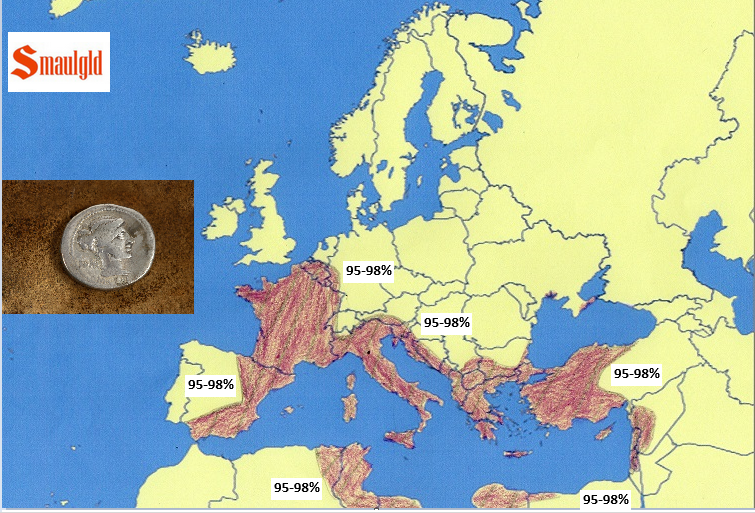
Map showing the Roman Republic circa 20BC/20AD. The silver coin show in a Roman silver denarius circa 89BC.
Roman Empire Circa AD 70
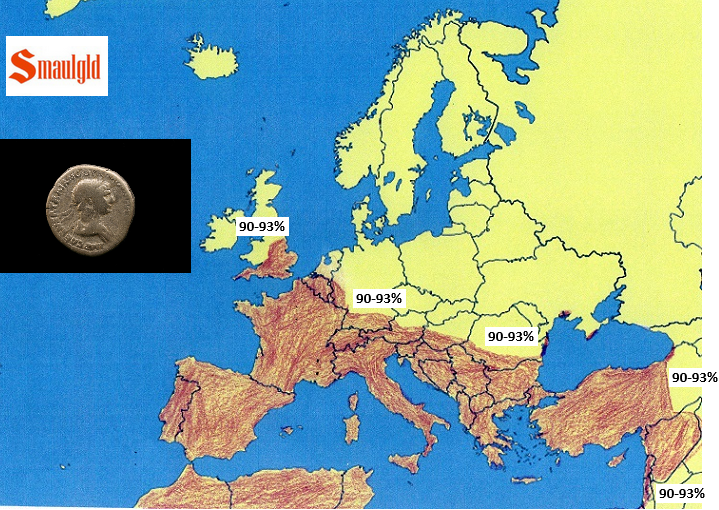
During the early days of the Roman Empire the silver content of the denarius was above 90%. The silver coin shown is of Roman Emperor Trajan circa 98 AD.
Roman Empire Circa – 190 AD
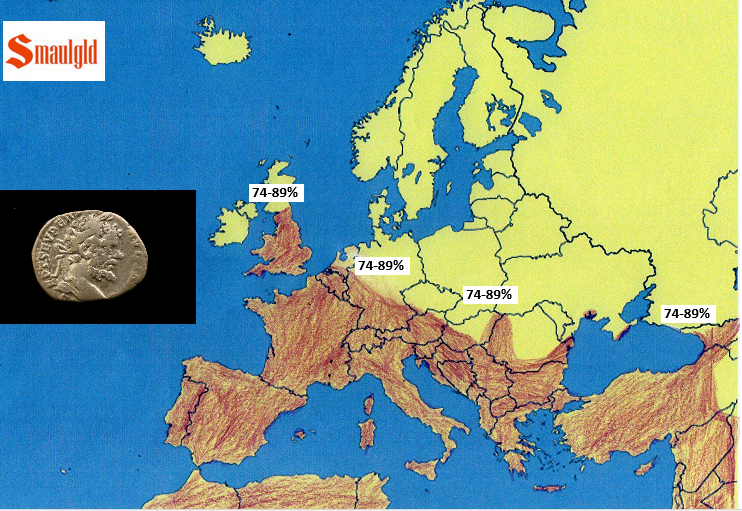
The Roman Empire peaked in 117 AD and was in decline by 190 AD. The silver coin show a Roman Denarius depicting Marcus Aurelius circa 180 AD.
Roman Empire Circa AD 230-270
By the mid third century, the Roman Empire was becoming too vast and unwieldy to be ruled from Rome. The empire would eventually be split into two by Emperor Diocletian in 285 AD.
The Roman Empire was finally overrun in 476 when a former soldier in the Roman armythe Germanic Odoacer ousted the last Roman Emperor, Romulus Augustulus,
The World’s Second Silver Empire – The United States
In the 20th century, the first world superpower since the Roman empire emerged -the United States of America. The U.S. was also a silver empire with billions of silver coins circulating among its citizens.
U.S. dimes, quarters, half dollars and dollars were minted of 89.24%-90% silver from 1794-1964.
The United States also kept a vast strategic stock pile and held silver to back silver certificates and the minting of coins for r general circulation. President John F. Kennedyworked to eliminate silver certificates and urged the de-monetization of silver from 1961-63.
In 1964 the U.S. discontinued the issuance of silver certificates that allowed holders to redeem them for physical silver held at the U.S. Treasury. Silver was removed from newly minted U.S dimes, quarters and half dollars by an act of President Johnson the following year.
The U.S. now sells silver coins to its citizens. In 1986, the U.S. Mint began producing one ounce American Silver Eagle coins for sale to collectors and investors.
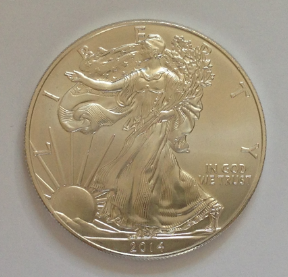
The U.S. Mint’s American Silver Eagle coin available for sale.
Why did the U.S. remove silver from its coinage? Next up – “The Last Silver Empire?”
The above originally appeared at Smaulgld.com

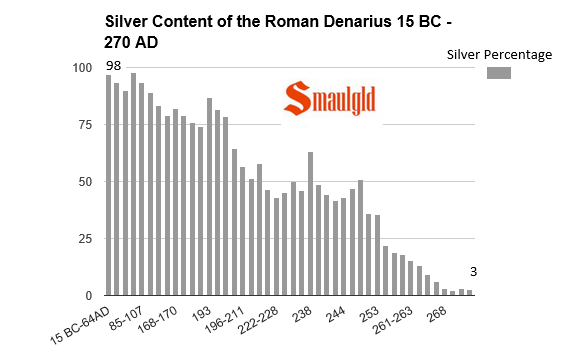
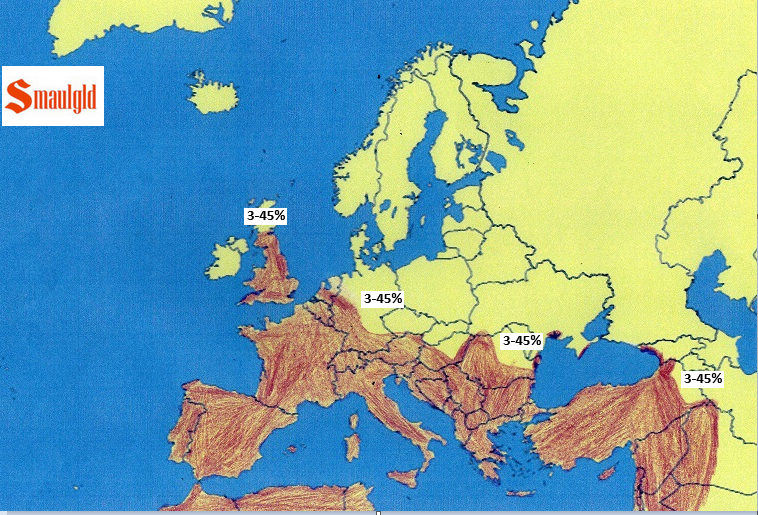
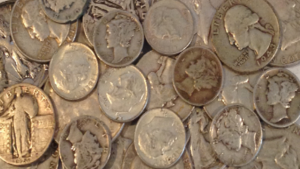
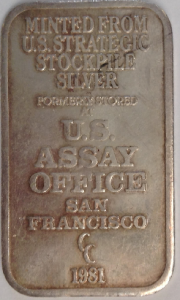
The fall of two empires
ReplyDelete